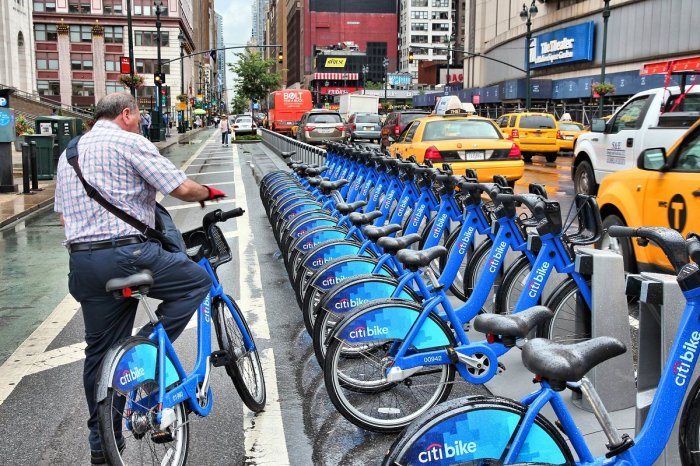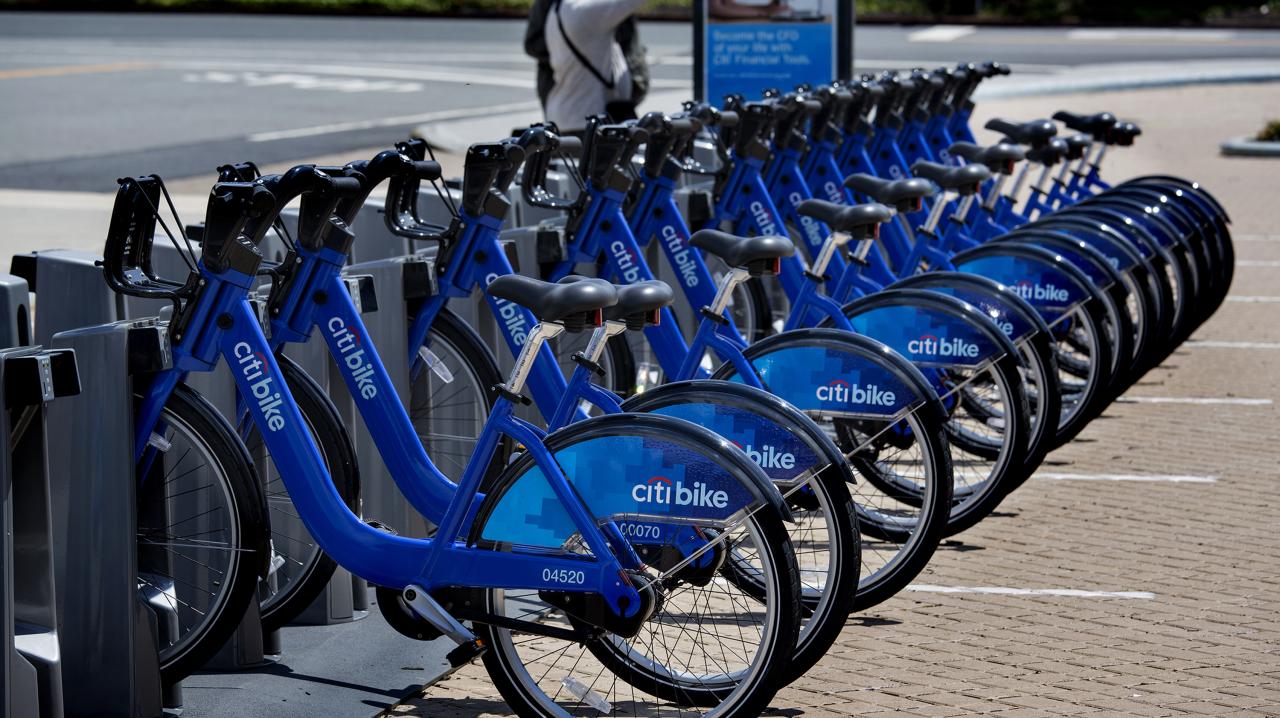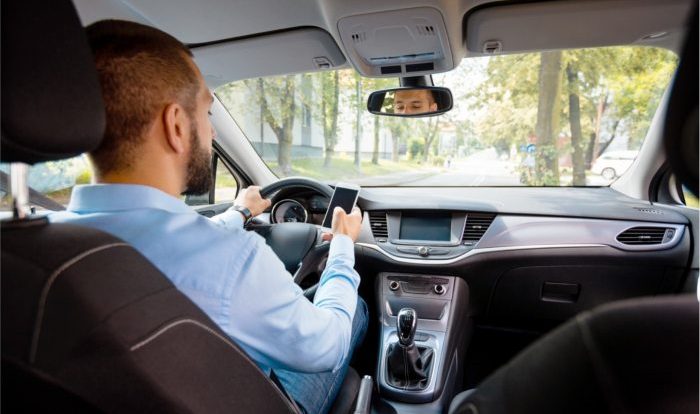Bike sharing programs like Citi Bike are an example of a growing trend in urban transportation that offers numerous benefits to cities and their residents. These programs provide a convenient, affordable, and environmentally friendly way to get around, and they have the potential to transform the way we think about transportation.
Citi Bike, New York City’s bike sharing program, is one of the most successful in the world. Launched in 2013, Citi Bike has over 15,000 bikes and 600 stations across the city. The program has been credited with reducing traffic congestion, improving air quality, and promoting physical activity.
Citi Bike is just one example of the many successful bike sharing programs that are operating in cities around the world.
Overview of Bike Sharing Programs

Bike sharing programs are systems that allow users to rent and return bicycles at designated stations within a city or region. They aim to provide an accessible, convenient, and environmentally friendly transportation option.
Citi Bike, launched in New York City in 2013, is a well-known example of a bike sharing program. It operates a network of over 1,500 stations and 20,000 bicycles, enabling users to travel efficiently within the city limits.
Benefits and Challenges of Bike Sharing
- Increased transportation options and reduced traffic congestion
- Improved public health through increased physical activity
- Reduced environmental impact by decreasing vehicle emissions
- Potential for theft or vandalism of bicycles
- Limited availability of stations in certain areas
- Safety concerns for riders, especially in areas with heavy traffic
Key Features of Bike Sharing Programs

Infrastructure
Bike sharing systems typically consist of:
- Docking stations where bicycles can be rented and returned
- Secure bike racks or locks
- Kios or mobile apps for user registration and payment
Renting and Returning Bikes
Users typically rent bikes using a membership card, smartphone app, or kiosk. They can unlock bikes from docking stations and return them to any available station within the network.
Technology
Bike sharing programs often utilize technology for:
- GPS tracking of bicycles
- Real-time data on bike availability and station usage
- Mobile apps for trip planning and payment
Impact of Bike Sharing Programs on Cities
Transportation and Infrastructure
Bike sharing programs can:
- Provide a convenient and affordable transportation option
- Reduce traffic congestion by providing an alternative to car usage
- Improve street safety by increasing visibility and awareness of cyclists
Environmental Benefits
Bike sharing programs:
- Reduce air pollution by decreasing vehicle emissions
- Promote sustainability by encouraging eco-friendly transportation
- Conserve energy by reducing reliance on fossil fuels
Social and Economic Impacts
Bike sharing programs can:
- Foster community engagement and physical activity
- Provide employment opportunities in the bike sharing industry
- Increase tourism and economic development in urban areas
Best Practices for Implementing Bike Sharing Programs
Successful Bike Sharing Programs, Bike sharing programs like citi bike are an example of
- Paris’s Vélib’ system, with over 14,000 bicycles and 1,400 stations
- London’s Santander Cycles, with over 11,000 bicycles and 800 stations
- New York City’s Citi Bike, with over 20,000 bicycles and 1,500 stations
Planning and Implementation
Guidelines for planning and implementing bike sharing programs include:
- Conducting a feasibility study to assess demand and infrastructure needs
- Developing a comprehensive plan that addresses system design, operations, and maintenance
- Securing funding and partnerships to support program implementation and sustainability
Promoting and Encouraging Usage
Strategies for promoting and encouraging bike sharing usage include:
- Public outreach campaigns to educate the public about the program
- Partnerships with employers and schools to offer discounts and incentives
- Integration with other transportation systems, such as public transit and bike lanes
Case Studies of Bike Sharing Programs
Citi Bike
Launched in 2013, Citi Bike is one of the largest and most successful bike sharing programs in the United States.
Successes
- Over 150 million rides since its launch
- Reduced traffic congestion and improved air quality in New York City
- Created jobs and boosted the local economy
Challenges
- Theft and vandalism of bicycles
- Limited availability of stations in certain areas
- Safety concerns for riders in heavy traffic
Vélib’
Vélib’, launched in 2007, is one of the oldest and largest bike sharing programs in the world.
Successes
- Over 1 billion rides since its launch
- Significant reduction in traffic congestion and pollution in Paris
- Improved public health and fitness levels among users
Challenges
- High operating costs due to vandalism and theft
- Unequal distribution of stations, leading to limited accessibility in some areas
- Safety concerns for riders in dense urban traffic
Future Trends in Bike Sharing: Bike Sharing Programs Like Citi Bike Are An Example Of

Emerging Technologies and Innovations
Emerging technologies and innovations in bike sharing include:
- Electric-assist bikes for easier riding in hilly areas
- Smart locks and GPS tracking for improved security and data collection
- Dockless bike sharing systems that allow users to park bikes anywhere
Integration with Other Transportation Modes
Bike sharing programs are increasingly integrating with other transportation modes, such as:
- Public transit systems, offering first-mile/last-mile connections
- Ride-hailing services, providing seamless intermodal transportation
- Car sharing programs, offering a range of mobility options
Future Direction
The future of bike sharing programs is expected to involve:
- Continued technological advancements to improve convenience and safety
- Increased integration with other transportation systems for seamless mobility
- Expansion of bike sharing programs to more cities and regions worldwide
FAQ Overview
What are the benefits of bike sharing programs?
Bike sharing programs offer a number of benefits, including:
- Reduced traffic congestion
- Improved air quality
- Promoted physical activity
- Increased access to transportation
- Reduced parking需求
How do bike sharing programs work?
Bike sharing programs typically work on a membership basis. Members can rent bikes from any station in the system and return them to any other station. Bikes are typically rented for short periods of time, ranging from 30 minutes to 24 hours.
How much does it cost to use a bike sharing program?
The cost of using a bike sharing program varies depending on the program. Some programs offer annual memberships, while others charge a per-ride fee. The cost of an annual membership typically ranges from $50 to $100. The cost of a per-ride fee typically ranges from $2 to $5.
